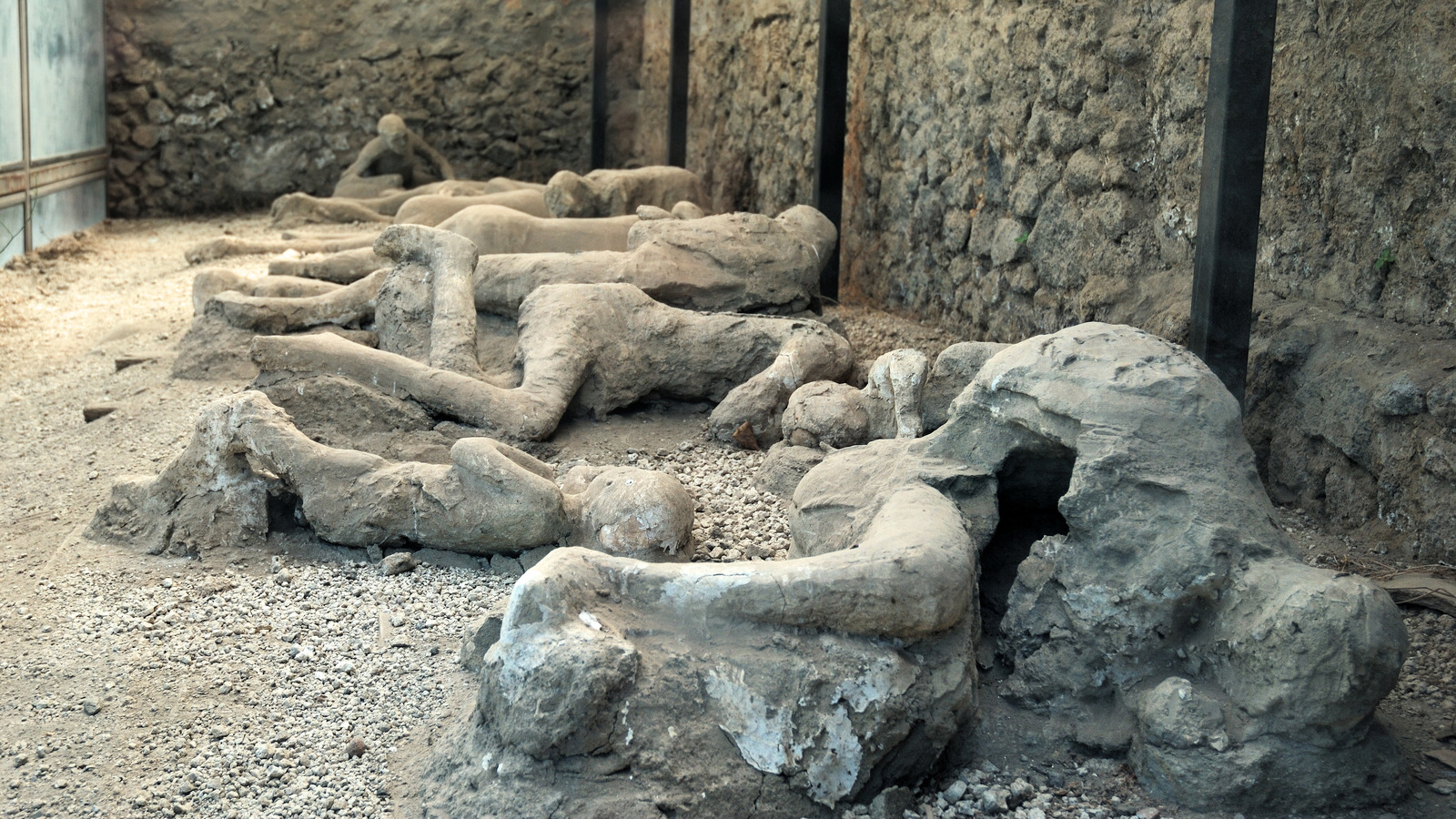
It took a precise sequence of events to grant us the casts of Pompeii’s victims shaped precisely like their bodies when they died. Pompeii Sites says that the eruption came in phases. The first phase was described in part by Pliny the Younger and consisted of lots of pumice stones falling from the sky. These smashed through roofs and hit people directly, or caused debris to hit people. Many, if not most, died during this phase, as the total debris reached almost 10 feet high.
Those who died got swallowed by lava, or more specifically, pyroclastic flow — a combination of hot ash, chunky lava, searing gas, and pumice. Pyroclastic flow can move up to 50 miles per hour and reach up to 1,300 degrees Fahrenheit. Then, preservation required a critical step: being covered in a blanket of ash. This ash kept the forms of bodies intact even after their biological matter deteriorated to nothing but teeth and bones. The BBC says that this ash — plus whatever other materials landed in the layer of lava and pyroclastic flow — solidified and hardened into place, ensuring preservation over time.
The shapes of the dead don’t only portray their torsos, limbs, or even facial expressions. Some of them even depict people’s clothing, like the dress of a young woman twisted around her waist and lifted above her legs. It’s a stunning, sometimes ghastly, and awe-inspiring reminder of mortality.








